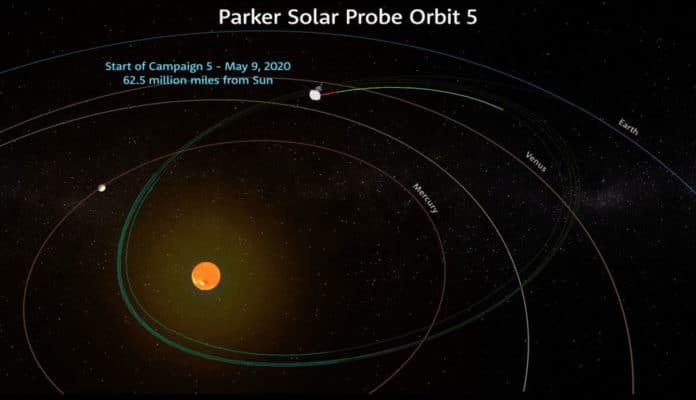On May 9, 2020, Parker Solar Probe started its longest science observation campaign. The probe activated its at a distance of 62.5 million miles from the Sun’s surface, about 39 million miles more distant from the Sun than a typical solar encounter.
This campaign is triggered by Parker Solar Probe’s earlier observations. Those observations revealed significant rotation of the solar wind and solar wind phenomena occurring much farther from the Sun. The instruments will collect data through June 28.
The probe will arrive at its closest point to the Sun for this orbit called perihelion, on June 7. At perihelion, Parker Solar Probe will be about 11.6 million miles from the Sun‘s surface, coordinating its record for a human human-made object to the Sunset during its fourth circle on Jan. 29.
After this solar encounter, the shuttle will swoop by Venus for its first outbound flyby of the planet. This is when Parker Solar Probe will play out its third Venus gravity assist. It will permit the shuttle to shed a portion of its orbital energy and get a lot nearer to the Sun on the next orbit.
Flying at the height of roughly 516 miles over Venus‘ surface— Parker Solar Probe will likewise observe a concise 11-minute solar eclipse during the maneuver. Each of the four instrument suites will be on and gathering information about the ner- Venus environment and the planet’s night side during the flyby.
Nour Raouafi, Parker Solar Probe project scientist at the Johns Hopkins Applied Physics Laboratory, said, “We have a real opportunity here to see what’s going on in these regions further from the Sun’s corona. While our primary goal is to understand the mysteries at the Sun’s corona and the ‘young’ solar wind closer to the Sun, there is evidence indicating exciting physics to explore earlier in orbit and link that to what occurs near the Sun. We can gather this data and see what it yields.”
